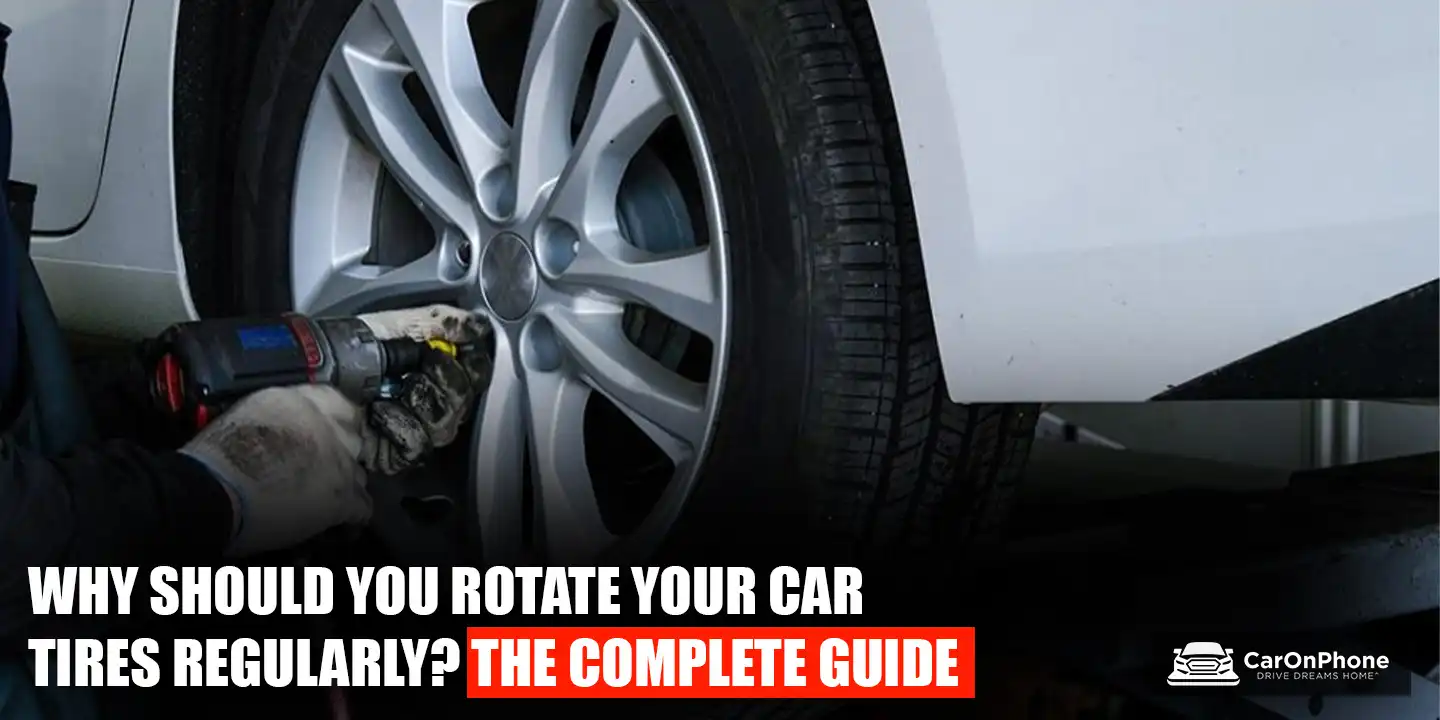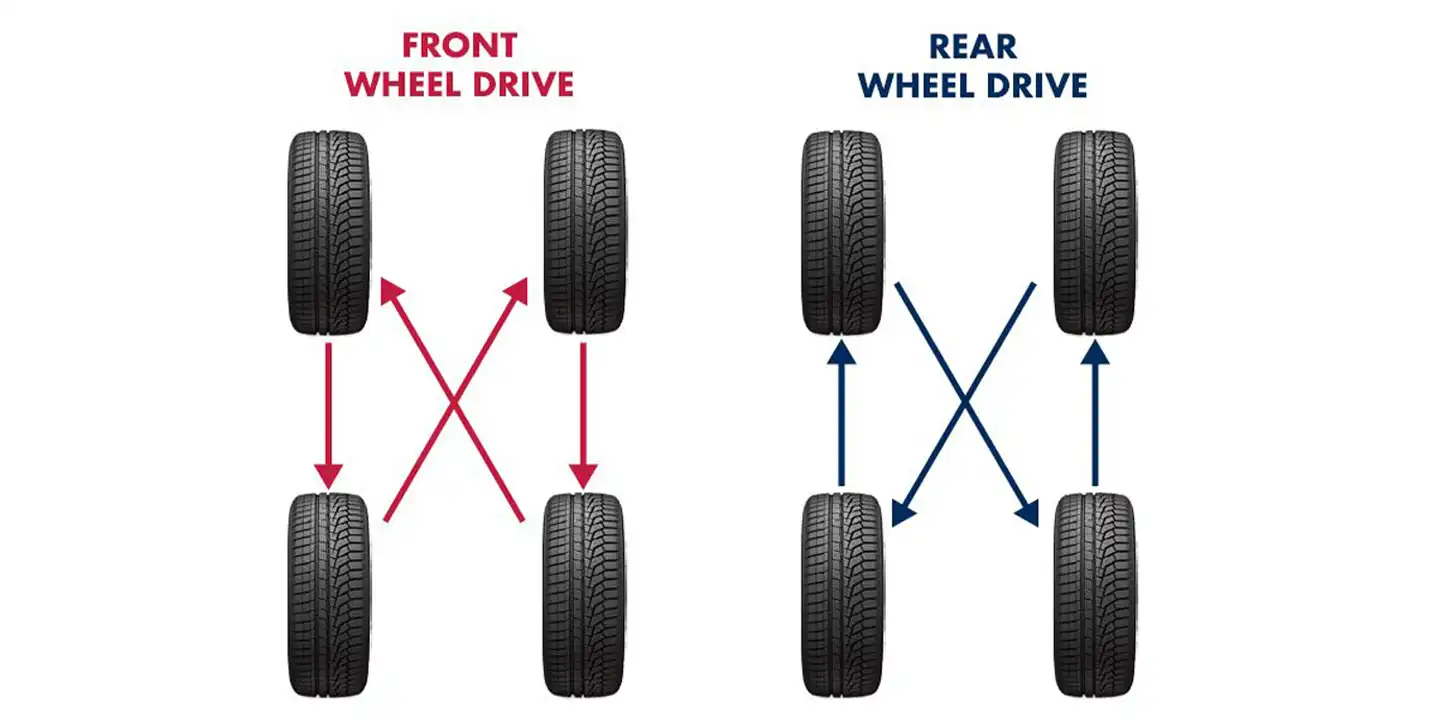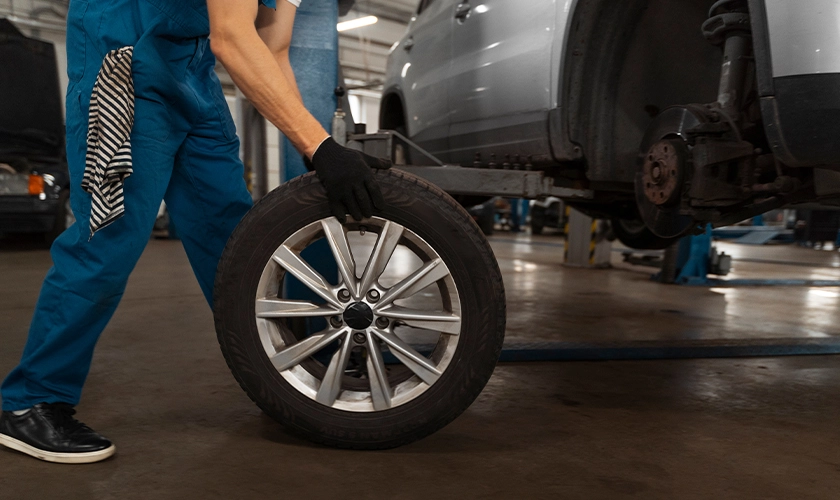
Proper tire maintenance is essential for vehicle safety, performance, and longevity. One of the most important yet often overlooked maintenance tasks is car tires rotating. Rotate car tires and it will ensure even tread wear, extend tire life, and improve overall driving performance.
In this comprehensive guide, we’ll explain why tire shifting in cars is crucial, how often you should do it, the best rotation patterns for different vehicles, and the benefits of keeping up with this simple maintenance task.
What Is Tire Rotation?

Car tires rotating is the process of moving tires from one position on a vehicle to another to promote even tread wear. Since tires wear differently depending on their location (front vs. rear, left vs. right), rotating car tires helps balance wear patterns and prolong tire life.
Why Does Tire Wear Differ by Position?
Tires wear unevenly due to varying forces—front tires handle steering and acceleration, while rear tires bear different loads. Weight distribution, drivetrain type, and braking forces all contribute to position-specific wear patterns that rotation helps balance.
- Front tires wear faster due to steering forces and weight distribution (especially in front-wheel-drive vehicles).
- Rear tires experience different stress patterns, leading to uneven wear if not rotated.
- Tire shifting in cars ensures all tires share the workload equally over time.
Why Should You Rotate Your Tires Regularly?
Regular rotation prevents premature wear, improves fuel efficiency, and maintains optimal traction. By evenly distributing wear, you extend tire life, enhance safety, and save money on replacements while keeping your vehicle performing at its best.
1. Extends Tire Lifespan
Uneven wear reduces tire longevity. By rotating car tires every 5,000–8,000 miles, you distribute wear evenly, helping tires last longer before replacement is needed.
2. Improves Fuel Efficiency
Misaligned or unevenly worn tires create rolling resistance, forcing the engine to work harder. Proper car tires rotating ensures optimal contact with the road, improving gas mileage.
3. Enhances Safety & Handling
Worn tires reduce traction, especially in wet or slippery conditions. Regular tire shifting in cars maintains balanced grip, improving braking, cornering, and overall stability.
4. Saves Money in the Long Run
Replacing all four tires at once is costly. By rotating car tires, you maximize tread life and delay the need for premature replacements.
5. Maintains Warranty Compliance
Many tire manufacturers require regular rotations to keep warranties valid. Skipping car tires rotating could void coverage.
How Often Should You Rotate Your Tires?
Most manufacturers recommend rotating tires every 5,000-8,000 miles or during oil changes. However, driving habits, road conditions, and vehicle type may require more frequent rotations to maintain even tread wear.
Signs You Need a Rotation Sooner:
- Uneven tread wear (bald spots, scalloping, or feathering)
- Vibrations while driving
- Reduced handling performance
Tire Rotation Patterns for Different Drivetrains
The ideal rotation pattern depends on your vehicle’s drivetrain. Front-wheel drive, rear-wheel drive, all-wheel drive, and directional tires each require specific rotation methods to ensure proper wear distribution and performance.
- Front-Wheel Drive (FWD) Rotation
- Pattern: Front tires move straight back; rear tires cross to the front.
- Reason: Front tires wear faster due to steering and acceleration forces.

- Rear-Wheel Drive (RWD) Rotation
- Pattern: Rear tires move straight forward; front tires cross to the rear.
- Reason: Rear tires handle more weight and wear faster in RWD vehicles.
- All-Wheel Drive (AWD) & 4-Wheel Drive (4WD) Rotation
- Pattern: X-pattern (front left to rear right, front right to rear left).
- Reason: Ensures all tires experience different positions for even wear.
- Directional Tires Rotation
- Pattern: Front-to-back only (no side-to-side swapping).
- Reason: Directional treads must rotate in a specific direction.
Can You Rotate Tires Yourself?
With basic tools like a jack and lug wrench, DIY rotation is possible. However, professional service ensures correct procedures and torque specs, especially if you’re unfamiliar with vehicle maintenance.
DIY Tire Rotation Steps:
- Park on a flat surface and engage the parking brake.
- Loosen lug nuts before lifting the car.
- Jack up the car and secure it on stands.
- Remove tires and move them according to the correct pattern.
- Reinstall and tighten lug nuts in a star pattern.
- Lower the car and torque lug nuts to manufacturer specs.
If unsure, a professional service ensures proper tire shifting in cars.
Common Tire Rotation Mistakes to Avoid
Neglecting spare tires, mixing mismatched tires, skipping alignments, and improper lug nut tightening are common errors. Avoiding these ensures your rotation delivers maximum benefits without causing new issues.
- Ignoring Spare Tires: If your spare is a full-size matching tire, include it in rotation to maximize tread life.
- Mixing Different Tire Types: Never rotate mismatched tires (different brands, tread patterns, or sizes).
- Skipping Wheel Alignment Checks: Rotation doesn’t fix alignment issues. Get an alignment if the tires show uneven wear.
- Forgetting to Check Tire Pressure: Always adjust pressure after rotating car tiresto ensure optimal performance.
When did you last rotate your car tires?
Regular car tires rotating is a simple but vital maintenance task that extends tire life, improves safety, and saves money. Whether you drive a compact car, SUV, or truck, following proper tire shifting in cars procedures ensures even wear and better performance.
Make rotating car tires part of your routine maintenance schedule, and enjoy smoother, safer, and more efficient driving for years to come!
Need a tire rotation? Visit your local service center or schedule a mobile tire service for convenience. Your tires—and wallet—will thank you!
FAQs
Q: How much does a tire rotation cost?
A: Professional tire rotations typically cost around INR 100 depending on your location and service provider. Many dealerships and repair shops include free rotations with oil changes or maintenance packages. While DIY is cheaper, professional service ensures proper torque specs and often includes a complimentary tire inspection.
Q: Do I need an alignment after rotation?
A: While rotation doesn’t require alignment, it’s wise to check alignment annually or if you notice uneven wear patterns. Proper alignment maximizes tire life and ensures your vehicle tracks straight. Many shops offer alignment checks during rotation services.
Q: What if my tires are directional?
A: Directional tires have tread patterns designed for one rotation direction (marked by arrows on sidewalls). They can only be swapped front-to-rear on the same side. Never cross-rotate directional tires as this reverses their intended water evacuation pattern.
 CarOnPhone
CarOnPhone

 CarOnPhone
CarOnPhone

 CarOnPhone
CarOnPhone

 CarOnPhone
CarOnPhone

 CarOnPhone
CarOnPhone

 CarOnPhone
CarOnPhone

 CarOnPhone
CarOnPhone

 CarOnPhone
CarOnPhone

 CarOnPhone
CarOnPhone

 CarOnPhone
CarOnPhone

 CarOnPhone
CarOnPhone













 Caronphone
Caronphone 


